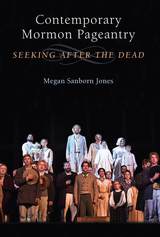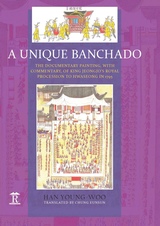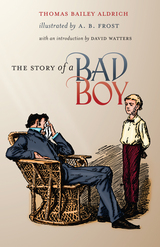3 books about Pageants

Contemporary Mormon Pageantry
Seeking After the Dead
Megan Sanborn Jones
University of Michigan Press, 2018
In Contemporary Mormon Pageantry, theater scholar Megan Sanborn Jones looks at Mormon pageants, outdoor theatrical productions that celebrate church theology, reenact church history, and bring to life stories from the Book of Mormon. She examines four annual pageants in the United States-the Hill Cumorah Pageant in upstate New York, the Manti Pageant in Utah, the Nauvoo Pageant in Illinois, and the Mesa Easter Pageant in Arizona. The nature and extravagance of the pageants vary by location, with some live orchestras, dancing, and hundreds of costumed performers, mostly local church members. Based on deep historical research and enhanced by the author's interviews with pageant producers and cast members as well as the author's own experiences as a participant-observer, the book reveals the strategies by which these pageants resurrect the Mormon past on stage. Jones analyzes the place of the productions within the American theatrical landscape and draws connections between the Latter-day Saints theology of the redemption of the dead and Mormon pageantry in the three related sites of sacred space, participation, and spectatorship. Using a combination of religious and performance theory, Jones demonstrates that Mormon pageantry is a rich and complex site of engagement between theater, theology, and praxis that explores the saving power of performance.
[more]

Martial Spectacles of the Ming Court
David M. Robinson
Harvard University Press, 2013
Like most empires, the Ming court sponsored grand displays of dynastic strength and military prowess. Covering the first two centuries of the Ming dynasty (1368–1644), Martial Spectacles of the Ming Court explores how the royal hunt, polo matches, archery contests, equestrian demonstrations, and the imperial menagerie were represented in poetry, prose, and portraiture. This study reveals that martial spectacles were highly charged sites of contestation, where Ming emperors and senior court ministers staked claims about rulership, ruler-minister relations, and the role of the military in the polity. Simultaneously colorful entertainment, prestigious social events, and statements of power, martial spectacles were intended to make manifest the ruler’s personal generosity, keen discernment, and respect for family tradition. They were, however, subject to competing interpretations that were often beyond the emperor’s control or even knowledge. By situating Ming martial spectacles in the wider context of Eurasia, David Robinson brings to light the commensurability of the Ming court with both the Mongols and Manchus but more broadly with other early modern courts such as the Timurids, the Mughals, and the Ottomans.
[more]

A Unique Banchado
The Documentary Painting of King Jeongjo’s Royal Procession to Hwaseong in 1795
Han Young-woo
Amsterdam University Press, 2017
Fully illustrated in colour, here is the first introduction in English to one of Korea’s outstanding cultural assets – the banchado (‘painting of the order of guests at a royal event’) – relating to all those taking part (1800 people) in the eight-day royal procession to Hwaseong (Gyeonggi Province) organized by King Jeongjo in 1795 for the dual purpose of visiting his father’s tomb and celebrating his mother’s sixtieth birthday. The banchado is a fine example of the meticulous record-keeping of the period (known as uigwe – the subject-matter of this book being known as the Wonhaeng eulmyo jeongni uigwe) and the skills of the court artists at that time. In addition to the banchado illustrations, the Wonhaeng eulmyo jeongni uigwe contains extensive lists of all the participants in the procession, details of the workers and technicians involved, including their duties and wages. It even includes the different foods offered at meal-times, the quantity of ingredients and the costs. The author provides a full analysis of the context, planning, execution and significance of the event.
[more]
READERS
Browse our collection.
PUBLISHERS
See BiblioVault's publisher services.
STUDENT SERVICES
Files for college accessibility offices.
UChicago Accessibility Resources
home | accessibility | search | about | contact us
BiblioVault ® 2001 - 2024
The University of Chicago Press









